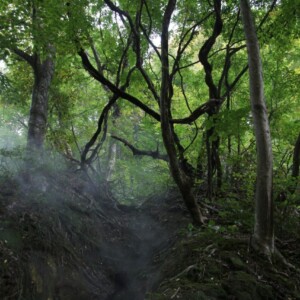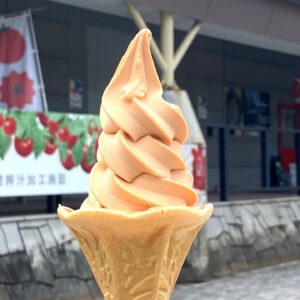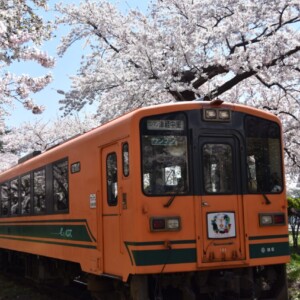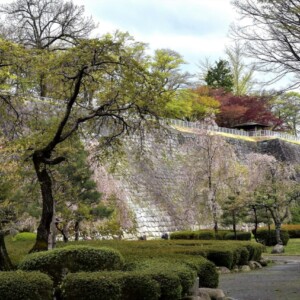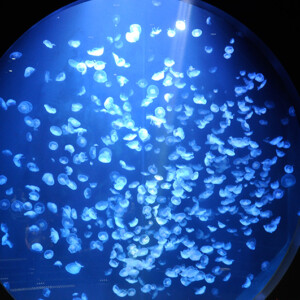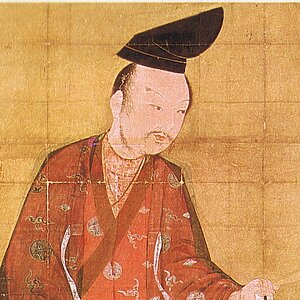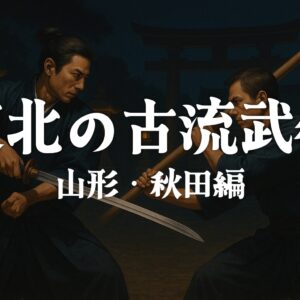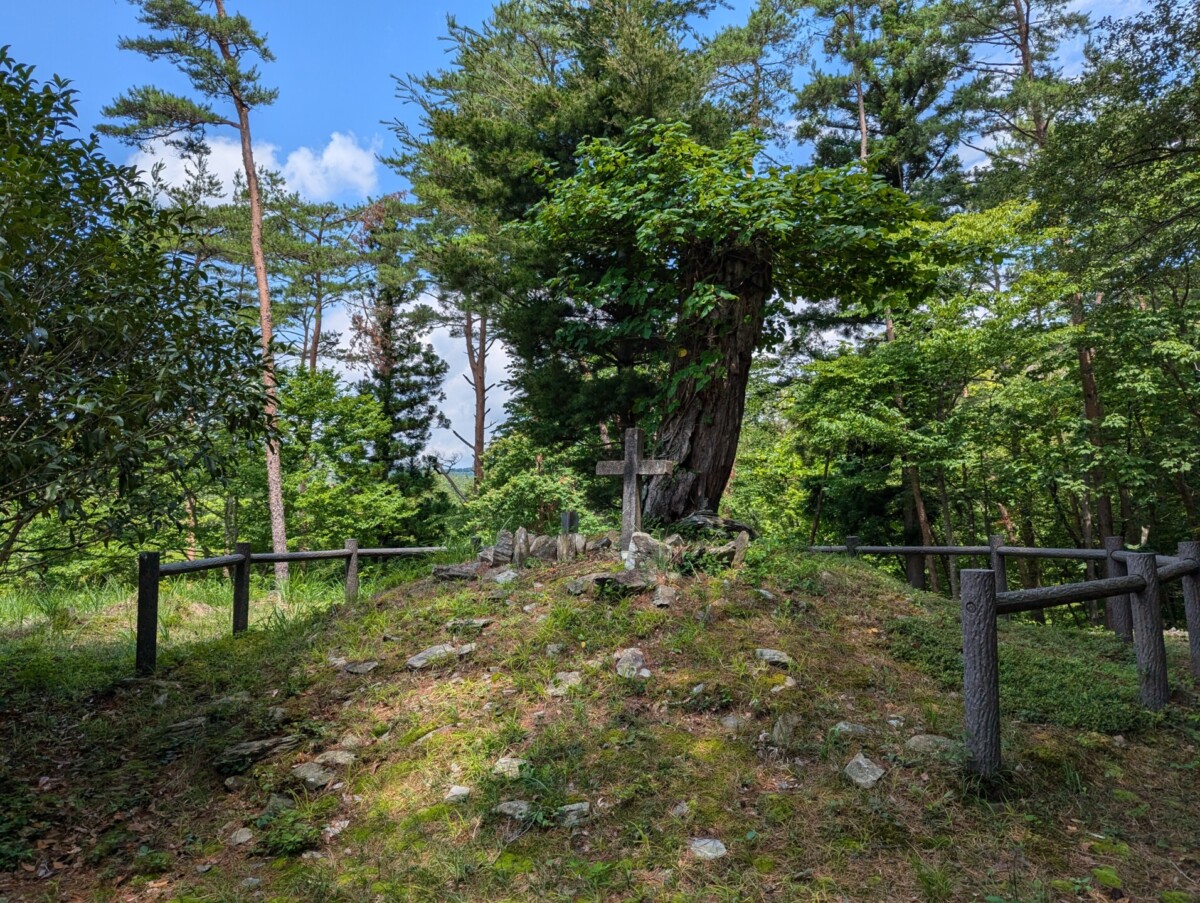
[Christianity spreading in Tohoku: Part 2] Northern Miyagi Prefecture, the village of hidden Christians [Historical Christian Site in Higashiwa-cho, Tome City]
table of contents
[Miyagi Prefecture Kita / Iwate Prefecture Southern District] Christianity spread in Tohoku (Part 1) In the southern part of the Miyagi prefecture, the hidden Christian village
- Christianity spread in Japan
- Christianity spreads to Tohoku
I wrote it up to the bans in the Tohoku region, but in this middle part, I actually visited the current Kita -Kita and Iwate southern regions, and how it is now remaining as a martyrdom. I will introduce whether you are there, along with local photos.
Please note that there are a large number of places considered to be martyrdom sites and places related to hidden Christians, so the explanation will be a simple one. If you are interested, we strongly recommend that you check the article and actually visit.
A Christian historical site in Yonekawa, Towa-cho, Tome City, northern Miyagi Prefecture
Catholic Yonekawa Church
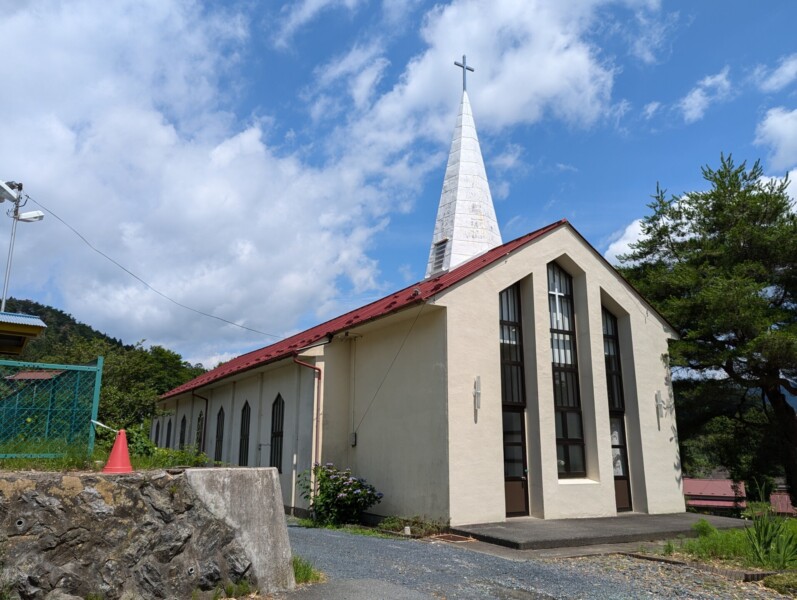
Around 1955, the Catholic Diocese of Sendai (Mr. Arikata Kobayashi) learned that Yonekawa, Towa Town, Tome City, was the site of martyrdom, and built it with donations from Canadian believers, and the current cathedral was built in November 1955. It was completed. At the same time, a kindergarten was also completed, and next to the Yonekawa Catholic Church is the Yonekawa St. Mary's Nursery School.
Baptism ceremonies were held in Yonekawa three times in 1955, with groups of approximately 300 people. The Catholic Yonekawa Church houses valuable Christian relics.
Information
- Address: 41-2 Yonekawa-cho Ura, Towa-cho, Tome-shi, Miyagi 987-0901
- Parking: Yes
- Tour: If you are interested, please contact us at the phone number below.
- Phone number: 0220-45-2054
Google Map
Sankeizuka
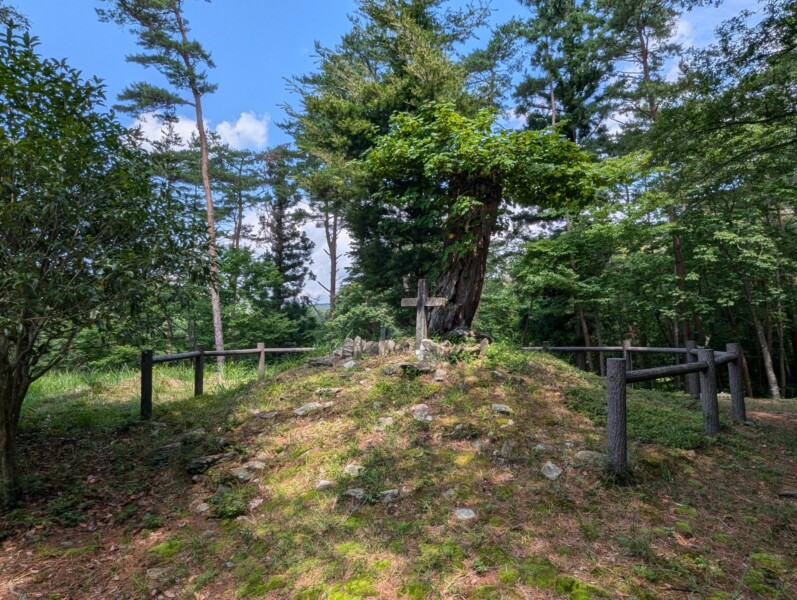
The three locations across the Tsunaki River in Towa Town, Tome City, Miyagi Prefecture are called the Sankyozuka: Honosawa, Uminazawa, and Keinomori.
During the Kyoho era (1716-1735) in this area, 120 people, mainly those who worked in the iron industry and mines, were executed by the Date clan. Their bodies were buried in groups of 40, and the Kyozuka of Uminazawa still remains as it was in the past.
The other two locations, Honosawa and Keinomori, do not remain in their original form, and it is said that only a small number of locals know the exact locations.
Cutting ground sacred place
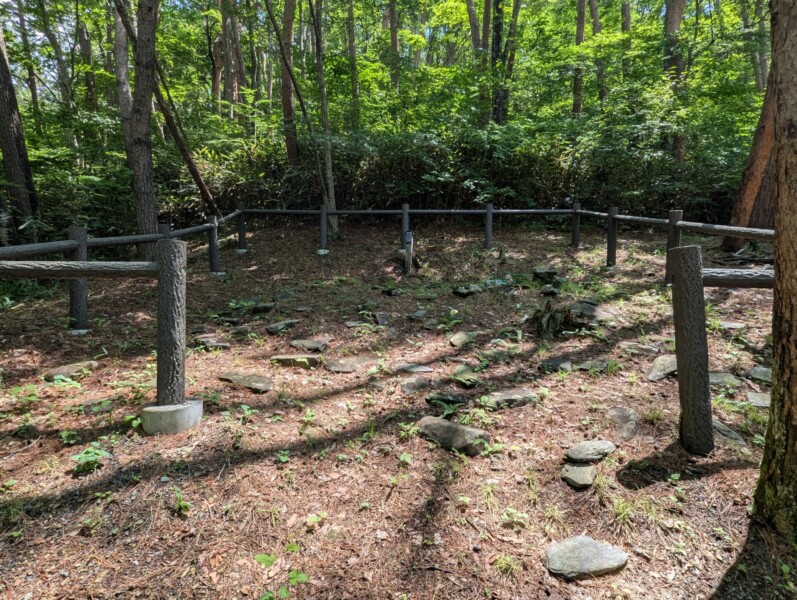
It is said that this is where a large amount of Christian blood was sucked.
The people of the Kirikiba mansion held a memorial service in secret through generations of oral tradition, but when the family moved to Hokkaido in 1981, it was first revealed to a close relative of a neighboring family, and it became known to the world. The arrangement of the river stones forming the three stone steps is said to be the same as it was back then, and the cross was created and erected in 1985 by the administrator personally and at the request of a neighbor.
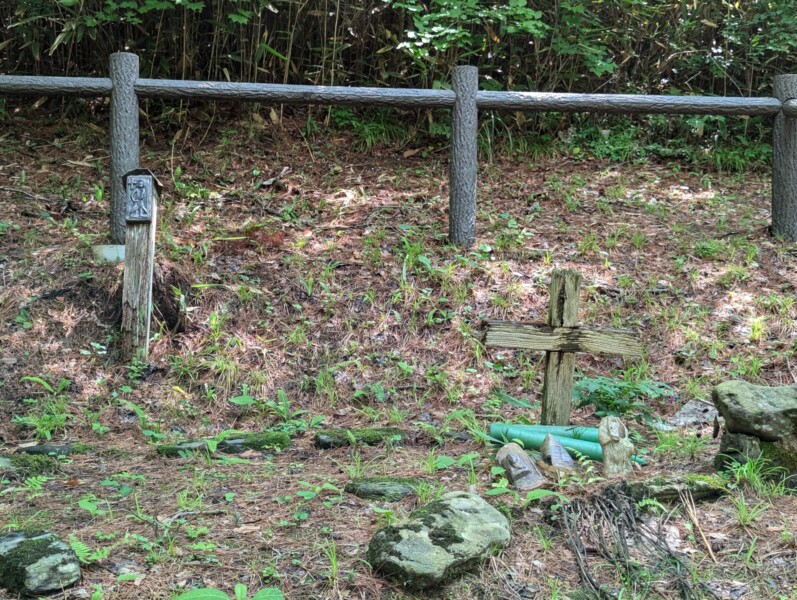
meditation hill

In order to increase iron production, the Date clan protected Christians who worked at the Doya ironworks, but in 1620, the feudal clan took a complete turn and started to strictly control Christians. I did.
In 1720, 120 Hidden Christians who were working at Keijiya were tipped off and gathered on this hill, where they watched the former Christians writhe in agony and die with 5-inch nails stuck in both hands and feet. It is said that he was shown off.
Despite being exposed to such a disgusting situation, not a single Christian fell down, and 120 Christians were brutally executed and martyred.
Rosario Hill

In addition to climbing from the Tsunaki Shinwa Kaikan at the foot of the mountain, there is also a route to climb from Rosario-zaka. This Rosary Hill was built in 1952 when Bishop Urakawa of the Sendai Diocese climbed this slope and put his favorite rosary on the trunk of an old pine tree that stood on top of the Sankyozuka to pray, and when he came back down the mountain, he realized that he had forgotten his rosary. The attendants immediately turned back, but Rosario was nowhere to be found, and her whereabouts remain shrouded in mystery.
It is said that Yoshiyuki Numakura, a local historian who was guiding Bishop Urakawa along the way, named this slope to commemorate that episode.
Information
- Address: Nishitsunagi, Yonekawa, Towa-cho, Tome City, Miyagi Prefecture, 987-0901
- Phone number: 0220-53-4111 (Towa General Branch Citizens Division)
Google Map
Oarasawa Christian Cave
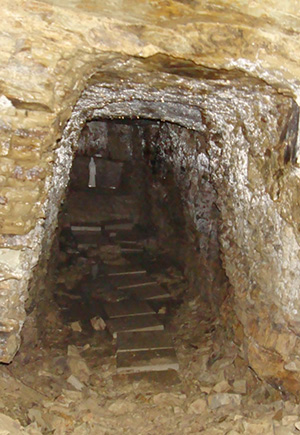
Oarasawa Christian Cave is currently inaccessible due to fallen trees and mud flowing in, but this cave was discovered in August 1971 and is located 1500m deep into the mountain to the west from Ogo Christian Martyrdom Park. , built by excavating horizontal aquatic rock formations.
In the back, there is what appears to be a two-tiered altar dug into the rock wall, and a 3cm-long nail-shaped metal hole that is thought to have been used for a lamp is also left intact in its original form. .
It is considered to be the most valuable ruin when it comes to talking about the hidden Christians of Tohoku.
Information
- Address: Yonekawa Okarasawa, Towa-cho, Tome City, Miyagi Prefecture, 987-0901
Monument of Goto Juan
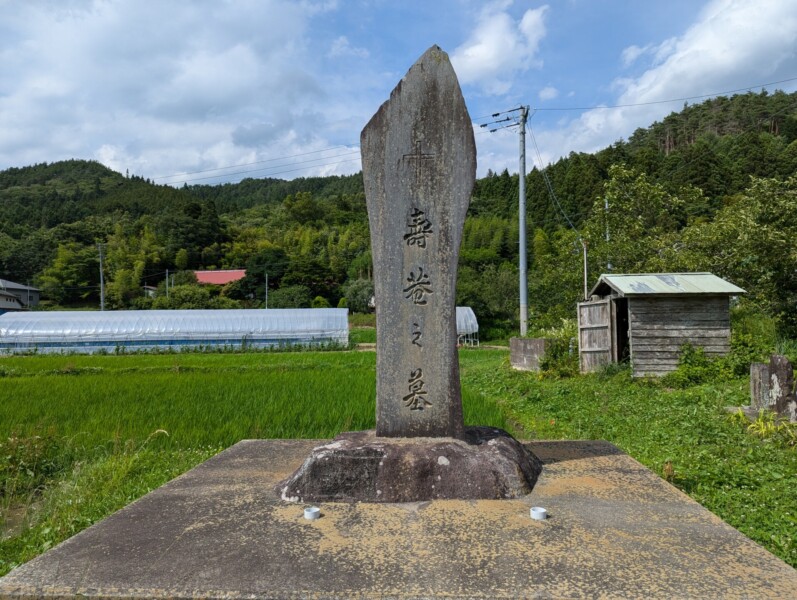
This is said to be the final resting place of Goto Juan, a Christian samurai and vassal of Date Masamune.
Goto Juan is the current lord of Mizusawa, Oshu City, Iwate Prefecture, and has gained great support for his benevolent government towards the people of his territory.He is also known as the founder of the "Juan Weir" which is still in operation today, and the "father of the development of the Isawa Plain." This is the person who is being told.
The Sendai domain's crackdown on Christians from 1963 became increasingly severe, and they continued to refuse orders from Lord Masamune to convert, but in 9th year of Genna, they could no longer resist and fled to the southern territory. has been. After that, all traces of Juan disappeared, but it is said that at the beginning of the Kan'ei era, under the care of the Oikawa family of present-day Yonekawa, they built a hermitage in the mountains of this area and lived there, and then moved to Nishikamisawa.
However, his life in this place did not last long, and it is said that he was attacked in his sleep one morning by a government official and was defeated due to a secret report. Because he was a Christian, he could not build a grave, and for a long time an anonymous cobblestone that served as a landmark was used as the grave of Juan, where memorial services were held with great care.
Later, in 1951, the monument was discovered by the Miyagi Prefectural History Compilation Committee, and in 1950, the village of Yonekawa at the time erected it as a memorial monument.
Information
- Address: 103 Nishikamisawa, Towa-cho, Tome City, Miyagi Prefecture 987-0901
Google Map
Part 2 continues to the Christian historic sites in the Okago area, Fujisawa-cho, Ichinoseki City, south of Iwate Prefecture.






![[Christianity spreading in Tohoku: Part 2] Southern Iwate Prefecture, became the village of hidden Christians [Historical Site in Fujisawa, Ichinoseki City] PXL_20240704_025010429 (1)](https://jp.neft.asia/wp-content/uploads/2024/09/PXL_20240704_025010429-1-150x150.jpg)
![[Christianity spreading in Tohoku: Part 1] The Northern Miyagi Prefecture to Southern Iwate Prefecture, the village of hidden Christians. PXL_20240704_034148337](https://jp.neft.asia/wp-content/uploads/2024/09/PXL_20240704_034148337-150x150.jpg)
![[Iwate Prefecture] Soft-serve ice cream with sake, miso and wasabi flavor! Why are the soft serve ice cream eaten at roadside stations so delicious? There's also school lunches! Iwate Prefecture Catch](https://jp.neft.asia/wp-content/uploads/2025/06/915fd0ce722ab0f21e74864401170847-150x150.jpg)
![[Yamagata Prefecture] Let's go try the delicious, locally produced soft serve ice cream at Yamagata's roadside station! Yamagata Catch](https://jp.neft.asia/wp-content/uploads/2025/07/2c2e7024e6ed08990103582514a5844e-150x150.jpg)
![[Iwate Prefecture] A unique soft serve ice cream near Morioka City! Why are the soft serve ice cream eaten at roadside stations so delicious? Morioka 4](https://jp.neft.asia/wp-content/uploads/2025/05/189a4a932dca375175b5cc49cd9a6d53-150x150.jpg)
![[Akita Prefecture] Akita has more than just Babahera ice cream! 5 roadside station soft serve ice creams with a wide variety! Showa 7](https://jp.neft.asia/wp-content/uploads/2025/07/635663812d6465cd23ff69f727cb14a8-150x150.jpg)
![[Iwate Prefecture] Japanese-flavored soft serve ice cream from the southern part of the Sanriku coast! Why are the soft serve ice cream eaten at roadside stations so delicious? IMG_0050](https://jp.neft.asia/wp-content/uploads/2025/06/IMG_0050-150x150.jpg)
![[Akita Prefecture] Part 2 of Akita Roadside Station Soft Cream! 4 Popular Soft Creams in the Prefecture's Inland Rice-Growing Region! Akita 2 Catch](https://jp.neft.asia/wp-content/uploads/2025/08/bf9fa170ebe4e828628e72952707b851-1-150x150.jpg)

